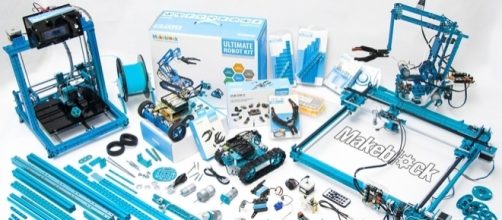Late last month, executives from the Hardware accelerator HAX provided an annual look at key trends in the tech manufacturing world. And while the findings may not be full of major surprises, they do point to important shifts in the hardware ecosystem that will be worth watching over the course of this year and next.
One key takeaway is that crowdfunding has emerged as one of the best ways to launch a hardware product. Not only is it the path of choice for consumer device makers, it is also a great place for tech companies to gather rapid feedback from customers.
One crowdfunding example is Makeblock, a six-year old startup that manufactures programmable robots and building kits for kids. According to HAX, the company debuted on Kickstarter, got helpful input from backers, and now has 400 employees and $600 million in annual sales.
China leverages low cost, high speed
Because the HAX accelerator is based in Shenzhen, the group has a fairly broad view of global hardware trends, and the current picture starts in china. According to HAX executives, China is investing heavily in robotics to keep manufacturing in the country, and venture capital rounds for Chinese startups are three times the level of funding for U.S. firms. “For innovation, China today is like Japan was in the 1980's,” said Benjamin Joffe, a HAX general partner.
“The advantage in China is not only cost, but also speed.”
Joffe also noted that as technology hardware matures, companies are starting to break away from the “maker movement” of home hobbyists who built prototypes in their garage. “The gap is widening between makers and startups,” said Joffe, who pointed out that HAX companies began showcasing products at the mammoth CES Show in Las Vegas for the first time this past year instead of participating in the largest maker fair event.
Single purpose rules home tech
Consumer tastes are dictating success or failure for hardware startups as well, although not exactly in ways that manufacturers hoped. An example of this can be found in the home technology market, where product suppliers were hoping that consumers would purchase whole suites of products for the smart house.
Instead, homeowners are buying single devices for a specific need.
“Consumers buy products for a single purpose,” said Kate Whitcomb, HAX program director. “If they work together, they do so through voice (connectivity).”
In some cases, home devices flounder before they get hot. Makers of the Ring doorbell, with a WiFi-enabled camera, struggled for funding (they were rejected on the “Shark Tank” TV show) before repositioning the product as a neighborhood-watch tool. Ring got a high-profile investment from billionaire Richard Branson and has been doing well since.
The HAX report also shows a noticeable increase in health-related technology hardware, particularly for devices which leverage data to meet consumer needs.
An example of this can be found in the Nura headphones, another Kickstarter-fueled product, that analyzes how your ear reacts to certain sounds and then tailors the listening experience accordingly by gathering data over time.
Not all hardware sectors are booming. HAX researchers noted that the first wave of consumer service robots, such as the Roomba vacuum, have matured and not advanced much beyond their initial promise. “We need smarter robots,” said HAX’s Joffe.
Hoverboards, all the rage a year ago, have cooled off considerably after product safety concerns dampened sales. “Hoverboards are so 2016,” said Joffe, who still predicted that demand for personal mobility devices such as the Ninebot mini-Segway and electric skateboards will grow.
Although the U.S. and China currently dominate the hardware market, other regions of the world are becoming centers in their own right. According to HAX, these include Bangalore, London, Paris, and Tel Aviv. If those centers continue to attract tech investment in startups, two-country (China and U.S.) leadership of the hardware world could be so 2017.


